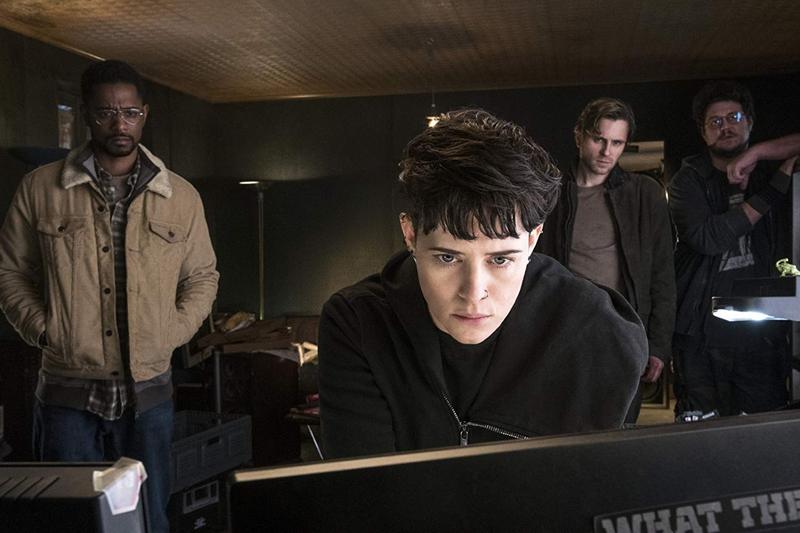The Girl in the Spider's Web: A New Dragon Tattoo Story
 for violence, language and some sexual content/nudity.
for violence, language and some sexual content/nudity.
Reviewed by: Keith Rowe
CONTRIBUTOR
| Moral Rating: | Very Offensive |
| Moviemaking Quality: |
|
| Primary Audience: | Adults |
| Genre: | Crime Thriller Drama Adaptation Sequel/Reboot |
| Length: | 1 hr. 57 min. |
| Year of Release: | 2018 |
| USA Release: |
November 9, 2018 (wide—2,929 theaters) DVD: February 5, 2019 |


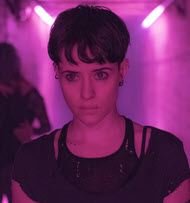

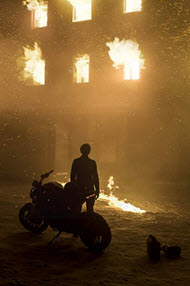
Surviving severe emotional and sexual abuse
Computer hackers
Cyber criminals

Corrupt government officials

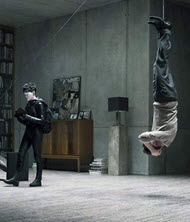
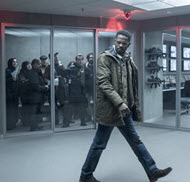

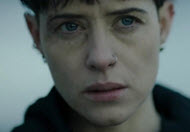
| Featuring |
|---|
|
Claire Foy … Lisbeth Salander—a computer hacker survived severe emotional and sexual abuse Sylvia Hoeks … Camilla Salander Lakeith Stanfield … Edwin Needham Stephen Merchant … Frans Balder Cameron Britton … Plague Vicky Krieps … Erika Berger Sverrir Gudnason … Mikael Blomkvist Volker Bruch … Mikael Persbrandt … Claes Bang … Andreja Pejic … Maria See all » |
| Director |
| Fede Alvarez — “Don't Breathe” (2016), “Evil Dead” (2013), “Panic Attack!” (2009) |
| Producer |
|
Metro-Goldwyn-Mayer (MGM) New Regency Pictures See all » |
| Distributor |
Prequel: “The Girl with the Dragon Tattoo” (2011)
Lisbeth Salander (Claire Foy) is back in “The Girl in the Spider’s Web,” based on the novel by David Lagercrantz and the characters created by the late Stieg Larsson. An extension of the American franchise (predated by a Swedish trilogy based on Larsson’s Millennium series) that began with David Fincher’s “The Girl with the Dragon Tattoo” (2011), “The Girl in the Spider’s Web” is directed by Fede Alvarez (“Don't Breathe”) and features a largely foreign cast, which lends the film added authenticity.
The story begins with computer hacker Salander accepting a job to steal top secret information. Soon after completing the task, Salander becomes the target of several international agencies including: the Swedish police, Russian agents, the NSA and a mysterious figure from her past.
What has drawn the interest of such disparate entities? A computer program called Firefall, which can access the codes of every nuclear arsenal on the planet. And it’s up to Salander to make sure the program doesn’t fall into the wrong hands.
The stolen files become the movie’s MacGuffin—the various parties are willing to go to any lengths to secure it, which presupposes an action-oriented plot. And indeed, the movie is packed with full throttle, well-choreographed action sequences that feel like they were lifted right out of a Bourne or Bond film. The motorcycle chase, culminating with Salander hurtling across an icy lake, is one of the most spectacular sequences in the movie. The bathroom brawl, vertical-lift bridge shoot-out and gas mask melee are also finely executed fight scenes.
More than its predecessor, “The Girl in the Spider’s Web” deals with Salander’s backstory. The movie opens with a sequence from her childhood—a traumatic event that set the course of her entire life.
Foy (“The Crown” Netflix series) is absolutely spellbinding as misanthropic photo journalist Salander. Whereas Rooney Mara (from “The Girl with the Dragon Tattoo”) tried to act anti-social and mad at the world, Foy just is. Though Foy is effective throughout, she’s downright frightening in her initial sequence where she goes vengeful vigilante on a woman beater; the makeup around her eyes gives her an added layer of feral intensity and makes her look like the newest member of the Suicide Squad.
Salander’s boss and confidant, Mikael Blomkvist (Sverrir Gudnason), has a far less significant role in this movie and, disappointingly, doesn’t really factor into the story in any meaningful way. And, with apologies to Gudnason, he’s no Daniel Craig.
The gorgeous locations, many of which were filmed in and around Stockholm, Sweden, add a great deal to the film and are truly mesmerizing and transporting. The cityscape establishing shots, particularly the ones shot at dawn, dusk or night, are breathtaking. Alvarez and his location scouts found some spectacular places to film, most notably an abandoned observatory. Such a locale is typically used as the villain’s lair, not the hero’s hideout, so kudos to Alvarez for bucking convention.
Though the film has many elements that recommend it, it also has many negative elements.
Negative Aspects
For starters, the movie is rife with inappropriate sexual content and behaviors.
The movie’s adult tone is established in the very first scene when we see full frontal and rear nudity of a woman with tattoos all over her body. Even though the woman is on the far side of a hallway from where the camera is positioned, the scene is utterly shocking.
Early in the movie, we’re subjected to a graphic scene of a man beating a woman. There’s a shattered wine glass and a puddle of blood on the floor. The woman’s hair is matted with blood.
Salander ties up the predator and tortures him with a taser. To ensure that the man will never again lift his hand to hurt a woman, Salander shows the man a pornographic video of him committing adultery and threatens to email it to his wife.
Salander ties up the predator and tortures him with a taser. To ensure that the man will never again lift his hand to hurt a woman, Salander shows the man a pornographic video of him committing adultery and threatens to email it to his wife.
As Salander cleans up after her escapade, her nude backside is visible through a translucent shower door (a later bath tub scene also reveals too much). The next scene follows Salander as she walks around her flat in her underwear. She jumps into bed with another woman, who we learn is just one of many lesbian partners she’s had.
At the beginning of a particularly lewd sequence, Salander enters a night club, and we see a woman with a portion of her butt exposed. There’s also a hint of underage sex in the scene. Salander walks into the back room, where several sex acts are glimpsed. She invades a stall, interrupting a couple engaged in coitus, to extract information from the woman. Back in her flat, Salander walks around in her underwear and a T-shirt that says “Gimme’ Head Until I’m Dead.” There’s also a scene with suitcase full of sexual toys.
There are several appearances of substances in the movie. As a peace offering, the abusive man hands a glass of alcohol to the battered and bleeding woman. In the night club, we see many people dancing and drinking. To counteract the effects of a powerful sedative, Salander crushes up and snorts some pills from a medicine cabinet. Salander is seen smoking several times.
The movie is inundated with swear words. There are over a dozen instances of the F-word (a couple are seen in text messages) and a half dozen occurrences of s**t. The word b**ch is heard three times. Other expletives, like h**l and d**n, are spoken several times each and are sprinkled throughout the film.
As an action movie, “The Girl in the Spider’s Web” contains many violent sequences. In addition to the torture scene, one character is placed inside a black latex suit with only a tube to breathe through. Intending to kill the person, the villain pours wax through the tube.
A woman is wounded in a shoot-out and is nearly consumed by fire in a devastating bomb explosion. In a grisly scene, a man uses a staple gun to suture her wound.
Viewers are shown a gory tableau… all the police officers guarding a building have been brutally shot and lay dead in pools of blood. After a violent fistfight, a villain forces Salander to shoot an innocent man. We hear the report of a gun and see blood splatter the inside of a shower door.
The film has many other skirmishes, and the bullet and body counts are considerably high. A sniper takes out enemies with surgical precision, shooting many of them through the head. A blind man is run over by a car, which results in the car wrecking into a tree. There’s also a suicide in the movie… a woman jumps off a cliff to prematurely end her life.
Spiritual Issues
With a plot preoccupied with sex and violence, it’s difficult to draw any positive spiritual messages from the film. However, one area of the story that lines up with a Biblical principle is its denunciation of those who commit acts of violence against women.
At the beginning of the movie, we witness a deeply disturbing flashback scene where young Salander leaves her sister alone with their father. The scene gives the distinct impression that the girls grew up in an incestuous environment. Due to Salander’s traumatic childhood, she distrusts most people, particularly men. She’s hypersensitive to her surroundings and is skilled at reading the motivations of others, especially if those desires might lead to the victimization of women.
Since one of the movie’s main themes is the sexual exploitation of women, Salander is held up as a type of avenging angel (or demon) when she punishes the man who batters a defenseless woman. Even though coming to the rescue of a wounded woman is honorable, resorting to torture and blackmail isn’t an appropriate way to obtain justice. While it’s understandable, from a human perspective, why Salander would want to take matters into her own hands, there are laws against such retribution. And, there’s an even higher law than ours: “‘Vengeance is mine, I will repay,’ says the Lord” (Romans 12:19).
On a psychological level, taking revenge on the man is a form of catharsis for Salander; tormenting the perpetrator is like getting back at her father. The film espouses that such heinous deeds are justified and that “an eye for an eye” (Matthew 5:38-42) is a perfectly acceptable method of punishment under the circumstances.
It’s ironic that this type of vicious attack makes Salander just as bad as the abusive man. But such irony is lost on a movie bent on glorifying violence and applauding vigilantism. Sad.
Final Analysis
Whereas “The Girl with the Dragon Tattoo” was a well-constructed mystery, “The Girl in the Spider’s Web” is a high-octane spy film. Though lacking in star power, the story by Alvarez, Jay Basu and Steven Knight is a taut thriller that keeps the audience engaged all the way up to its cliffhanger ending. However, there is some strongly objectionable R-rated violence, nudity, perversion, and foul language.
- Violence: Very Heavy to Extreme
- Vulgar/Crude language: Very Heavy
- Sex: Very Heavy
- Nudity: Heavy
- Profane language: Moderate
- Occult: None
See list of Relevant Issues—questions-and-answers.


PLEASE share your observations and insights to be posted here.
